
New this spring, the Skarab (men's) and Skimmer (women's) are versatile packs that should be equally at home travelling, for general outdoor use, and on big hill walks. A useful size for day trips, the Skarab 30 is an all-rounder rather than a technical mountain pack. In terms of features there's quite a lot to it, and while I generally prefer simplicity in a pack I do think there's plenty to like here. The fact that I've been using it pretty heavily for the last eight months must say something.
The men's Skarab comes in 22 or 30 litre capacities, while the women's version, the Skimmer, is available in 20 or 28 (I'm not sure why women would need 2 litres less). Our review sample of the Skarab has been used happily by both men and women, and it's arguable that for a pack of this size and usage, a gendered fit is less important (compared to, say, trekking, running or climbing packs).
Capacity
The Skarab's 30 litre capacity makes it pretty versatile. In summer time this is as much pack as I'd usually need for a non-climbing day walk on the hills; but with a larger winter hillwalking load it's a bit tight, unless you're making a particular effort to go minimalist. Mine has seen as much use on low-level family rambles as it has up on the summits, and it's a good size for spare kids' clothes plus family picnic. I've also used it on an overnight trip to a Pyrenean mountain hut (no sleeping bag or camping gear required), and though the weight did push the comfort of its unstructured back system a little, the size was perfectly adequate. At the same time the Skarab 30 is not too big for general travel and townie day trips; and I've used it as hand luggage on budget airline flights without risk of being charged extra.
Fit and comfort
Osprey are known for their well-engineered back systems, which generally combine top levels of ventilation with just the right amount of padding for the job. The Skarab is no exception. Against the wearer's back is a firm sheet of dimpled cushioning ('bump-foam' in marketing speak). With a honeycomb of air holes, and a mesh overlay, this gives you plenty of ventilation; I've worn this pack comfortably in high 20s temperatures, so it works. Many designs of rucksack achieve ventilation by putting a big air gap between your back and the main body of the pack, but this tends to shift the weight backwards and makes for a less well-balanced feel. Here Osprey have kept the centre of gravity good and close, something you might notice in particular if you're running or scrambling with the Skarab.
The foam back panel is soft enough to flex with the twisting of your torso as you walk, but with sufficient firmness to provide some support for load carrying - a good balance.
For hot weather the shoulder straps are perforated with loads of big holes, making them about as airy and un-sweaty as you could hope. Well sculpted for a close fit that won't restrict your arms at all, the harness has only a thin depth of cushioning. If you're carrying just a few kilos then this is all the padding you need; deeper foam would only add unnecessary bulk. As a day pack the Skarab isn't built for heavy weights. I've only ever noticed this in a bad way when pushing its remit with a full load on a two-day walk, when the thin hip belt and straps began to feel a little insubstantial.
Continuing with the ventilated theme, the hip belt is thin and only very lightly padded, and honeycombed with little air holes. This proves comfy and reasonably effective at stabilising the pack and taking a bit of the weight; but if you're around my size (6 foot) or larger, then the back length will be insufficient to get much benefit from the belt. Unless fully loaded, I've tended to fold the hip belt out of the way around the back of the pack (it's of borderline utility with a light day load anyway).
There's no back length adjustment, and the Skarab comes in only one size. I think it will best fit small-to-medium adults. I also find that on me this pack tends to sit low on the back, something I've particularly noticed when it's heavily loaded. On the other hand it's a close and well-balanced fit, and although it isn't primarily designed as a running pack I'm sure it could be used as such.
Features
This is a top-entry zip-open pack, which is less fiddly than a conventional buckle-and-drawstring, but also potentially rather less weatherproof since the zip is exposed to the elements. The lid folds back to give a nice wide mouth; the zip itself is reassuringly chunky and robust; and you get two glove-friendly zip pulls. Inside the lid is a small zipped mesh valuables pocket, which includes key clip - to my mind one of those small features that is pretty much essential. An additional external zipped pocket is lined with something soft that's designed not to scratch your sunglasses or gadget screens.
Twin side compression straps work well to reduce the size of a half-full pack. You also get a single axe loop and two loops for retaining the tips of trekking poles (the shafts are held under the top compression strap). Daisychains also give you additional strapping-stuff-on options.
A big expanding 'shove it' pocket is a good place to keep a jacket or your map for quick retrieval. The size adjustment for this is incorporated into the side compression straps. It works fine, but I might have preferred a stretchy fabric here, which would have given you a bit more capacity. If, unlike me, you use a water bladder, then you can shove one neatly into a dedicated sleeve behind the back padding. Keeping it outside the main pack strikes me as a better solution than a bladder inside the pack itself (which is more likely to get the contents wet, and has to be piped out through a hole).
Two zipped side pockets are also provided. Preferring a pack with clean lines, I don't generally use these while I'm out alone; but they have proved their worth on family walks, giving quick access to children's gloves, hats and snacks. These pockets aren't quite large enough for a 1 litre water bottle, and I do wonder if something stretchy might have been better here as well. I am unconvinced by the zips. These work in the reverse of the direction you'd expect, opening upwards instead of downwards. If the pocket is quite full this makes it more likely that stuff will fall out when you go in to get something; you also risk losing things if the zip hasn't been fully closed (there's less chance this will happen with a pocket aligned the usual - correct - way). I can see no logic in this design, so it really has to be considered something of a flaw.
Additional outside storage comes in the form of a zipped pocket on each side of the hip belt. I can see the point on a trekking pack that's a faff to take off every time you want your gloves or a jelly baby. However on a day pack I'll just say that, for me, these pockets are basically redundant. I'm sure other users will disagree.
Another small but potentially significant mistake is the addition of a magnetic insert on the chest buckle. The idea, I assume, is that this serves as somewhere to attach the hose of your water bladder. Leaving aside my instinctive aversion to sucky tubes, and anything that encourages their use in grown adults, the presence of a magnet on your chest is obviously going to deflect your compass needle. If you carry a compass in a jacket pocket (yep) and also tend to hold your map and compass in front of you at around chest height when taking a bearing (also yes) then I guarantee this will be a big concern. The magnet is quite powerful, and sends a compass doo-lally. Magnets seem to be a bit of a fad in clothing and equipment at the moment, but manufacturers really ought to know better. For use in the UK's hills, where poor visibility is a fact of life, these small and largely pointless additions could very easily land you in trouble. The insert can be prized out, and I'd suggest all users do so straight away. Forget, and you may one day find yourself walking in circles on a misty moor.
A final Marmite feature is an integrated rain cover. I've used it once, in a summer thunderstorm when the rain was falling horizontally. However in my experience of the typically British wind-plus-horizontal-rain scenario, pack covers are of limited use and you're better off stashing things in drybags. Still, it's better to have the option, and you can always leave it at home.
Weight, fabric and durability
The Skarab manages to offer all these features while remaining reasonably light at 900g all-in (as weighed on my kitchen scales - Osprey's ambitious quoted 780g must exclude the rain cover). You will certainly find lighter packs of this size, but I don't think the Skarab is half bad in this respect.
Its 210D nylon ripstop fabric is pretty tough stuff, while the general build quality feels high too. This isn't a delicate ultralight model that needs treated with care, but a good honest knock-around pack that feels like it's made to last.

Summary
Comfy, well-vented, and a generous size for day trips, the Skarab 30 is a versatile and well-made day pack that's ideally suited to hillwalking and general outdoor use. It's not aimed at lightweight minimalists, and it won't fit larger users well, but if you like a nicely padded pack with plenty of pockets then it's well worth seeking out.
Osprey say:
Designed for ultimate versatility, Skarab 30 features a large daypack capacity which is perfect for year-round day-long adventures. An innovative Bump Foam back panel provides amazing levels of comfort and ventilation, while the low profile harness and padded hip belt enable excellent load transfer, even when the pack is full and heavy.
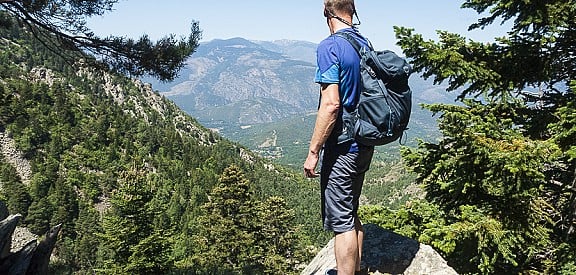


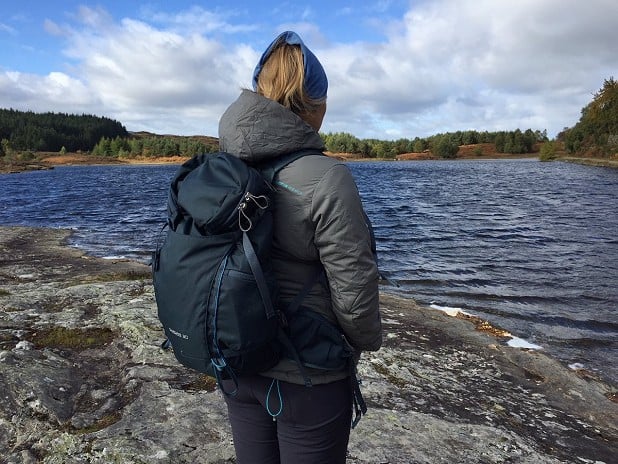
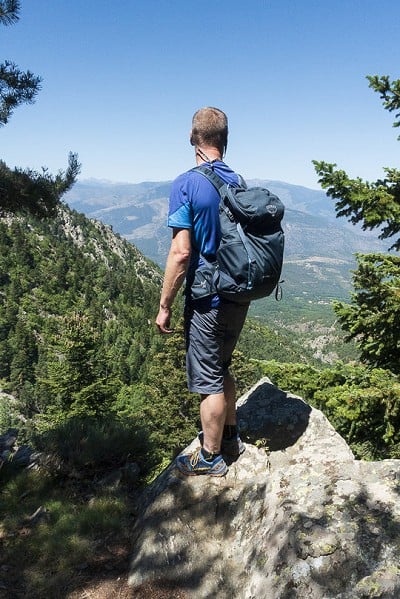
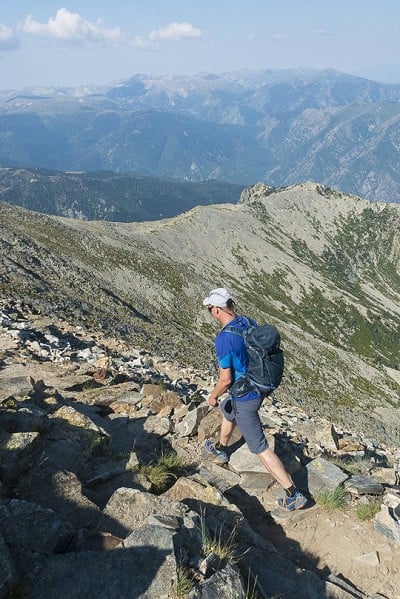
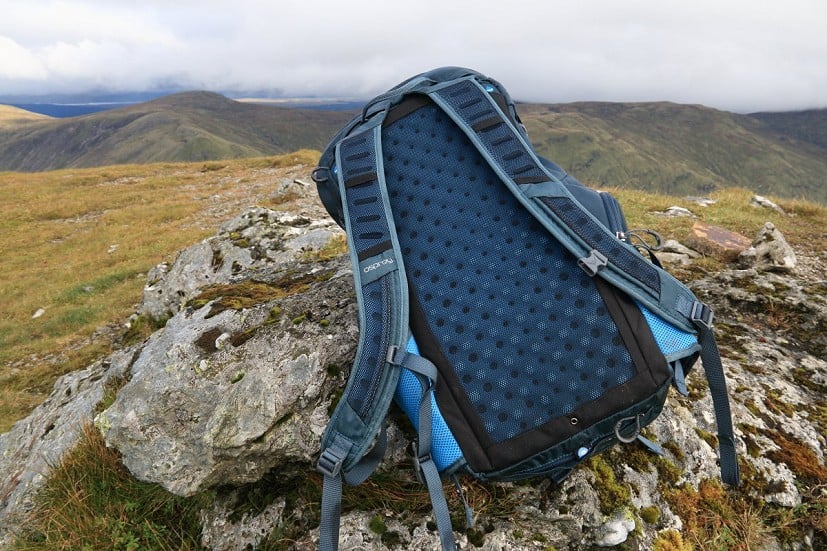
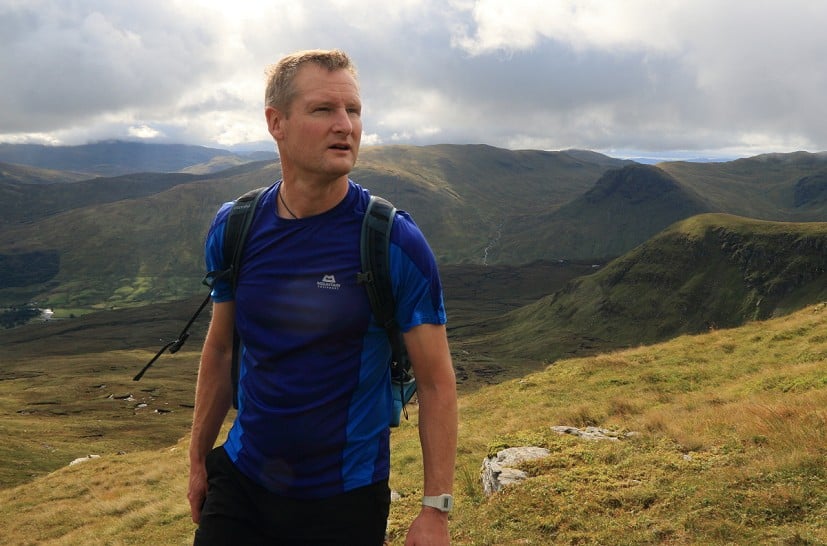
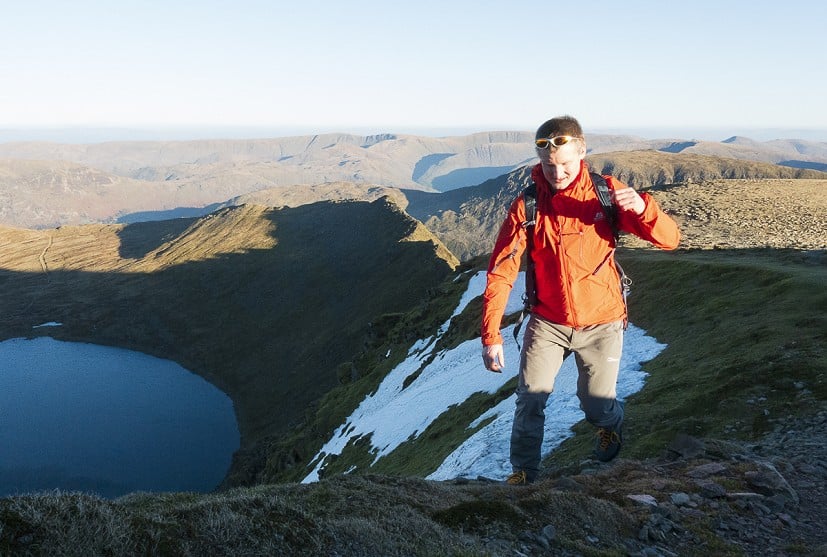

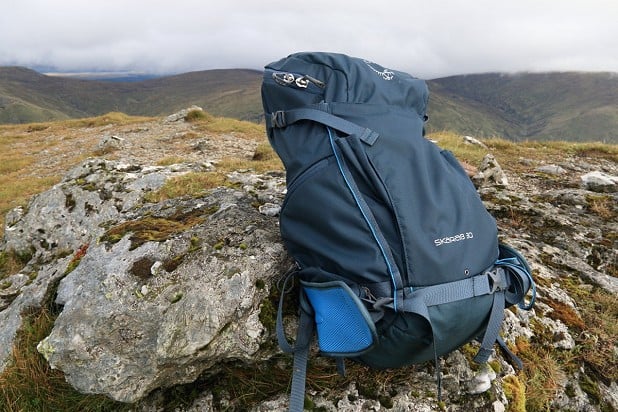
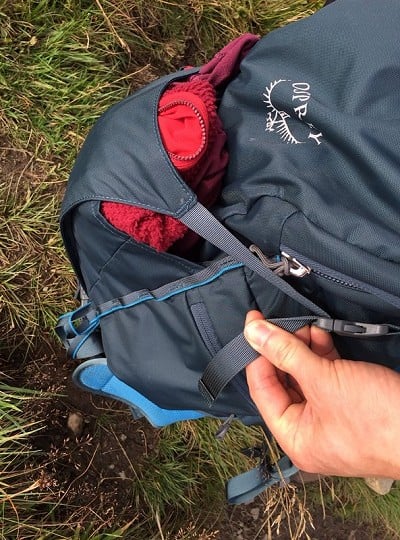
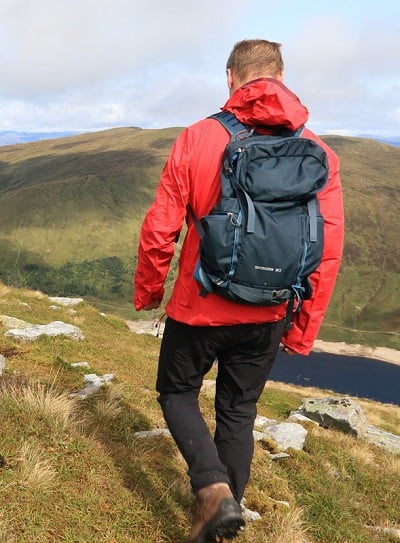
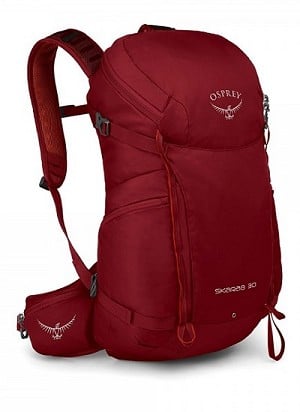

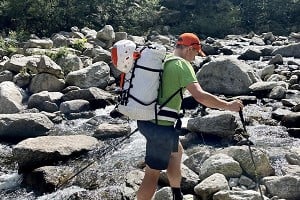

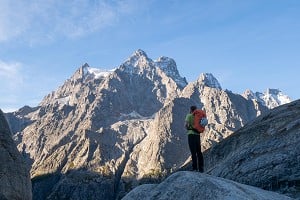
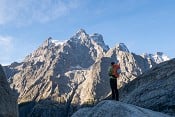
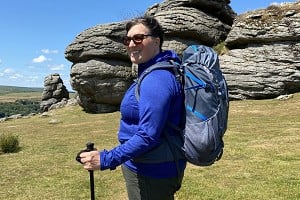

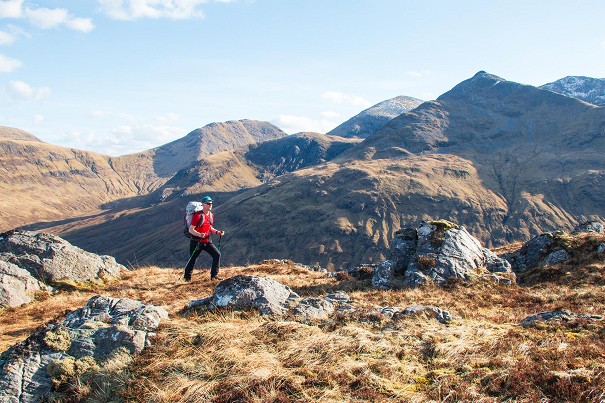
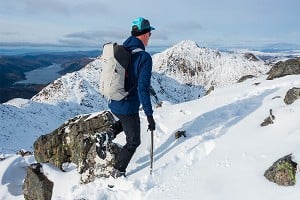

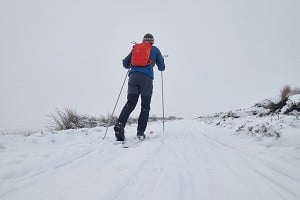
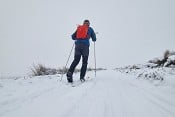






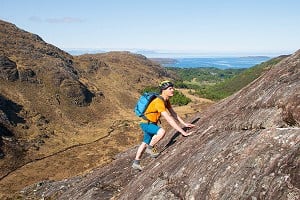
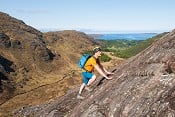


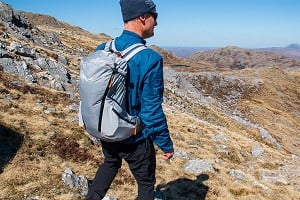
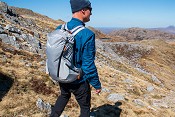
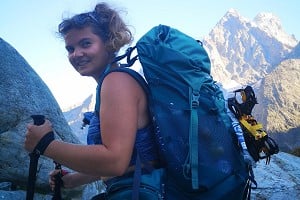
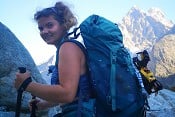

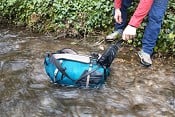

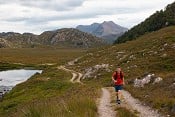
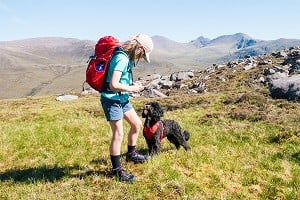
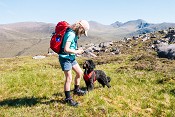
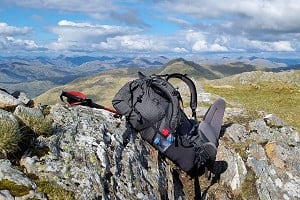
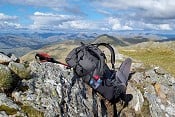
Comments
You really do dislike "sucky tubes" don't you Dan? :-) Was a it a traumatic accident with a curly-wurly straw when you were little or something? ;-)
On a couple of packs I have they do have little hip-belt pockets and I was surprised at how useful I found them - having previously survived 30+ years without them and never thinking "I really need a pocket on my hip-belt!" But once you have them, particularly on walking packs as opposed to climbing, you can put all sorts of things in them and soon get quite used to it. A little monocular is one thing I took once, almost by chance, but with it in the hip-belt pocket easy to grab, I watched more birds and other wildlife for longer on that walk than I would normally.
Like rain covers, it does seem an Osprey thing to have lots of natty little features on the pack, but I think Osprey do design well that there is no or minimal weight increase due to them.
Down with yucky sucky tubes.
I don't spend much time worrying about them, but yes I guess I do loathe them. If forced to declare my hand, I think they are: unsanitary, infantilising and vaguely medical-looking. The hose gets in the way, it's hard to keep track of how much water you've got left, and if anything they encourage you to drink too often.
Hip belt pockets: On a pack this small I'd be unlikely to bother with a hip belt (even assuming the back system was long enough for it to properly fit me), in which case pockets here aren't really going to be useful. On a big trekking pack I can definitely see the point. A monocular does sound like a good idea though, and that would be the logical place to keep one for quick use...
I'm with you on sucky tubes - too easy to drink all your fluids without realising, too easy to spring a leak in your bag without realising it, and too easy to rip the bite valve off brushing through narrow gaps and vegetation. I've suffered or witnessed all these things, and all could have serious consequences. As a consequence I now use 2 or more european refundable* fizzy drink bottles - 'free', and tougher than UK fizzy drink bottles (the plastic is thicker). Multiple bottles give redundancy if one is kept in the main compartment and another in a side pocket for easy access.
* Aside from feel, they're distinguishable by a chunkier flange at the neck.
Same goes for hip belts and tall people - generally a waste of time. The only time I've used mine was on VF where they help stop the sack swinging round to one side.